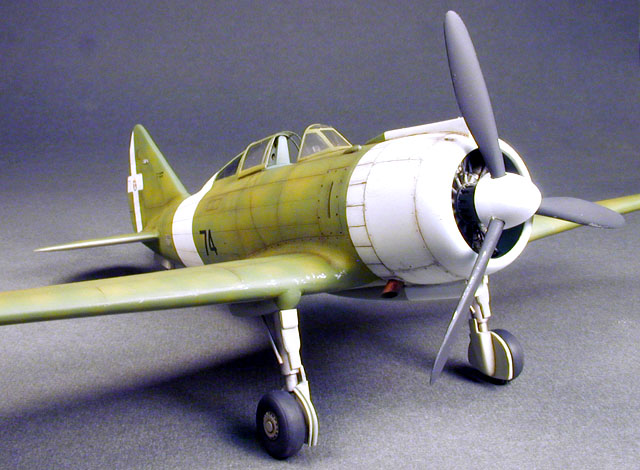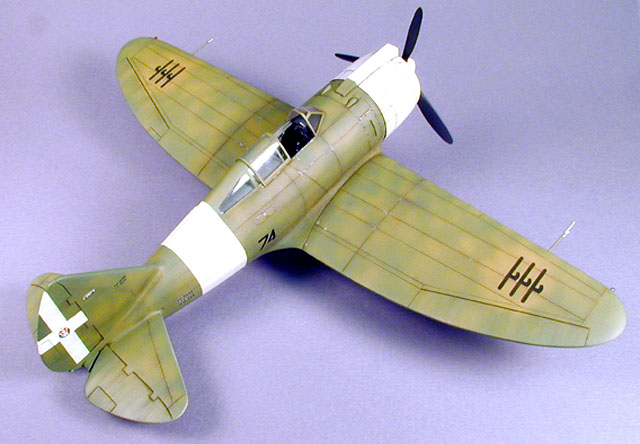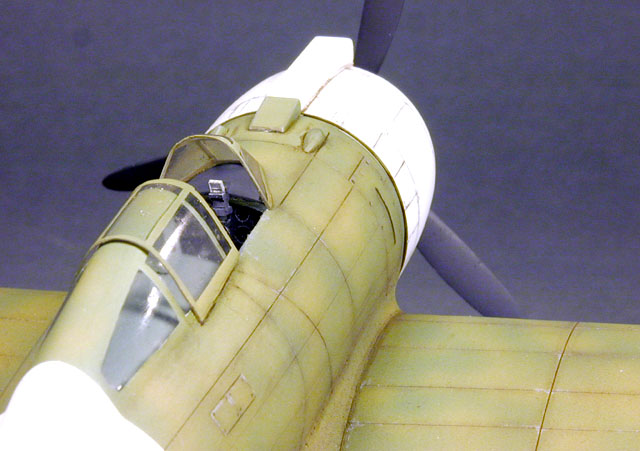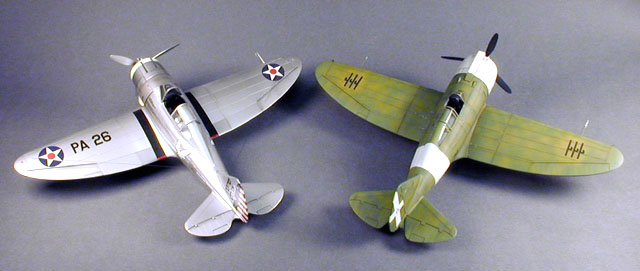|
Reggiane Re.2000
by John C. Valo
 |
|
Reggiane Re.2000 |

Classic Airframes' Reggiane Re 2000 is
available online from Squadron.com
Designed in 1938, the Reggiane Re.2000 reflected the influence of
the American aviation industry on its design, obviously strongly
following the lines and proportions of the Seversky P-35.
Early flights demonstrated comparable and occasionally superior
performance to its Italian contemporaries, the Fiat G.50 and Macchi
MC.200. Unfortunately, the Piaggio radial engine was notoriously
unreliable, leading to a number of aircraft losses through mechanical
failures. The Italian authorities also objected to certain structural
arrangements, and insisted the aircraft was too vulnerable to enemy
fire to be accepted as a fighter. This, along with the powerplant
problems, doomed the aircraft to never seeing quantity production.

Most of the aircraft produced served with the air forces of Hungary
and Sweden. Italian use was very limited in Sicily from 1941-42.
Re-engined with a license-built copy of the Daimler-Benz 601 inline
engine, the basic design found a new lease on life as the Re.2001.
Classic Airframes recently released an excellent 1/48 scale kit of the
Re.2001, and now has provided modelers the opportunity to build its
progenitor, the Re.2000, in the same scale.
Typically for Classic Airframes, the kit consists of two injection-molded
plastic sprues, two vacuformed canopies, and well-cast resin cockpit,
engine and various small details.
All resin parts are nicely detailed, and I had no problems with fit.
The instructions suggest assembling the cockpit parts as a tub, then
inserting this into the fuselage. I deviated from the instructions and
taped the cockpit walls in place on the fuselage sides and used them
to determine the position of the remaining parts before committing
them to glue.

Click on the thumbnails
below to view larger pictures of the engine and cockpit components:
The resin engine has nicely molded individual cylinders which look
great when assembled. I added the prominent pushrods with stretched
sprue. The assembled engine fits tightly into the cowling with just a
little sanding on the cylinder heads.
The balance of assembly is very straightforward, and similar to the
Re.2001 as
reviewed by Brett Green on HyperScale and
Lynn
Ritger on Modeling Madness. I suggest reading both these reviews
as they will provide additional suggestions for assembly and detailing
that apply to both the 2000 and 2001.
|
Painting and
Marking Options |
An option is provided to build either a Serie I aircraft with a
glazed rear cockpit fairing or a Serie III aircraft with rear
vision cutouts in a solid cockpit fairing as on the Re.2001. The parts
for either version fit very well. Microscale decals are provided with
markings provided for seven aircraft: one Hungarian Serie I,
one Swedish Serie I, one Italian Serie I and four
Italian Serie III planes.
Click the thumbnails
below to view larger images of the decals:
I elected to build the white cowled Serie I bird based at
Cosimo in 1941. A photo of this aircaft shows the camouflage to be
very soft with large, patchy mottles. I sprayed the entire
uppersurface in Dark Olive, then oversprayed it in a soft, almost
translucent mottle of 'Giallo Mimetico', a color very similar to
British Middlestone. The decals performed perfectly.
A part is provided to attach to the top of the glazed fairing, which I
believe represents a small radio antenna insulator. I am under the
impression that not all aircraft were fitted with radios, and after
studying the photo of this aircraft again, I elected to eliminate the
aerial entirely from the model.
Unlike the colored clear parts provided in the Re.2001 kit for the
bulbous navigation lights, these are provided in the Re.2000 as resin
parts. I simply stole the extras provided in the Re.2001 to use on
this model.
Oddly, the Re.2000 appears to have carried two pitot tubes, a
straight one on the port wing and a kinked one on the starboard wing.
Adding these completed the job.
The model is surprisingly attractive, and in three dimensions, the
Re.2000 is considerably more elegant than I had anticipated. It makes
an interesting comparison to the P-35 when placed side-by-side.

I highly recommend this kit to most modelers, even those of modest
experience - This is another good candidate for a first limited-run
kit, along with the Re.2001 - it depends if you like radials or
inlines!
Click the thumbnails
below to view larger images:
Model,
Images and Article Copyright © 2001 by
John C. Valo
Page Created 08 November 2001
Last updated
04 June 2007
Back to
HyperScale Main Page
Back to
Features Page |
Home
| What's New |
Features |
Gallery |
Reviews |
Reference |
Forum |
Search